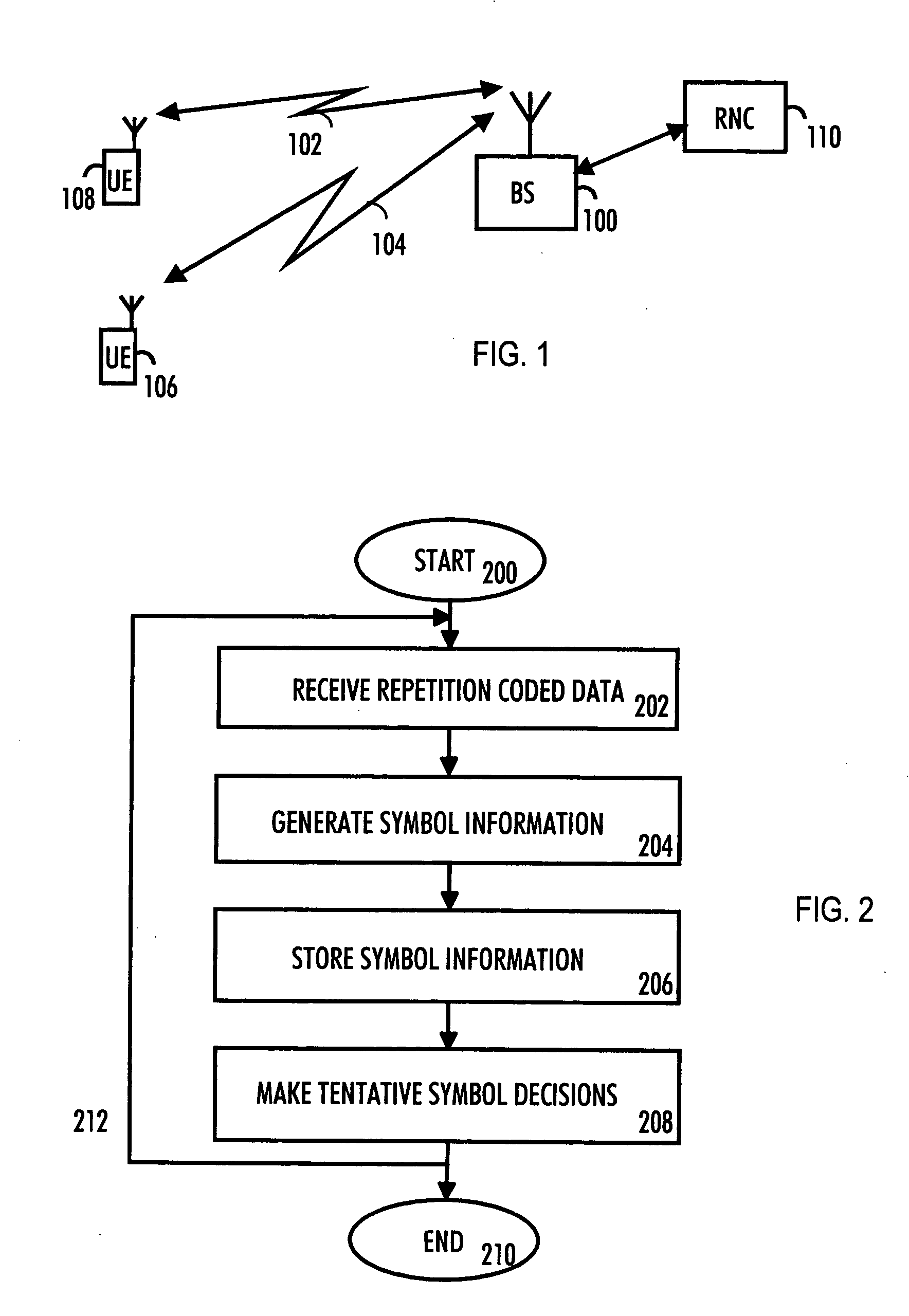Data transmission method and receiver
a data transmission and receiver technology, applied in the direction of pulse technique, amplitude demodulation, line-faulst/interference reduction, etc., can solve the problems of multiple access interference (mai) present in the receiver, interference-limited cdma system performance and system capacity points of view, and inability to achieve optimal performance of this kind of receiver
- Summary
- Abstract
- Description
- Claims
- Application Information
AI Technical Summary
Benefits of technology
Problems solved by technology
Method used
Image
Examples
Embodiment Construction
[0017] With reference to FIG. 1, we examine an example of a communication system to which embodiments of the invention can be applied. The present invention can be applied to various wireless communication systems. One example of such a communication system is the UMTS (Universal Mobile Telecommunications System) radio access network. It is a radio access network which includes WCDMA (wideband code division multiple access) technology and can also offer real-time circuit and packet switched services. The embodiments are not, however, restricted to the systems given as examples, but a person skilled in the art may apply the solution to other radio systems provided with the necessary properties.
[0018] It is clear to a person skilled in the art that the method according to the invention can be applied to systems utilizing different modulation methods or air interface standards.
[0019]FIG. 1 is a simplified illustration of a digital data transmission system to which the solution accord...
PUM
 Login to View More
Login to View More Abstract
Description
Claims
Application Information
 Login to View More
Login to View More - R&D
- Intellectual Property
- Life Sciences
- Materials
- Tech Scout
- Unparalleled Data Quality
- Higher Quality Content
- 60% Fewer Hallucinations
Browse by: Latest US Patents, China's latest patents, Technical Efficacy Thesaurus, Application Domain, Technology Topic, Popular Technical Reports.
© 2025 PatSnap. All rights reserved.Legal|Privacy policy|Modern Slavery Act Transparency Statement|Sitemap|About US| Contact US: help@patsnap.com



